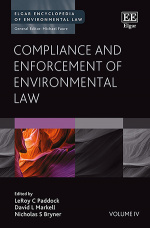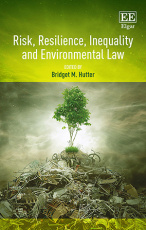
Volume 13/2
C.R Bijoy
Forest Rights Struggle: The Making of the Law and the Decade After
The progressive subjugation, appropriation, enclosure and policing of the forests in India since the colonial period has left millions of forest peoples in a precarious struggle for survival and waging a continuous battle for their rights. The exclusionary development and conservation thrust left in its wake, devastated forests and forest peoples. What began as the final uprooting of forest peoples from the forests in 2002, ironically triggered a nationwide struggle that forged a unique law in 2006 on tenurial rights and forest governance, with communities in control over both environment and development. However, in the decade since then, despite having made remarkable strides, with the threat of losing their vicious hold over the forest and lives of forest peoples, the state and particularly the forest bureaucracy, elite environmentalists, and the corporates continue to confront the forest peoples and the law relentlessly. This narrative details the making of the law, and the simultaneous strengthening of the law and its subversion in law and practice, a clear reflection of the ongoing power struggle as it unfolds.
Lynda Hubert Ta
The implementation of the United Nations Convention to Combat Desertification in Burkina Faso
Amongst the international instruments deriving from the United Nations Conference on Environment and Development, also known as the Earth Summit that took place in Rio de Janeiro, Brazil, in 1992, the United Nations Convention to Combat Desertification was adopted in Paris on the 17th June 1994. It has been ratified by 193 states. Effectively recognising that desertification is a serious and persistent environmental, social and economic problem, despite efforts made by the international community to put an end to it, the states that were present in Rio voiced their concerns regarding the issue, thus deciding to draft an agreement dedicated to fighting desertification. This agreement has become one of the cornerstones of international environmental law. Legally binding for the Parties required to follow the provisions, the global discourse has echoed a desire for it to be integrated within the domestic policies of these Parties, particularly those countries most affected by desertification, such as Burkina Faso. This article aims to critically question the implementation of the United Nations Convention to Combat Desertification in this country, over 20 years after its adoption, both in relation to what it has achieved so far and what remains to be done to meet the objectives of the Convention.
Lorenzo Cotula
International Soft-law Instruments and Global Resource Governance: Reflections on the Voluntary Guidelines on the Responsible Governance of Tenure
Covering issues long considered to be within the exclusive preserve of national jurisdiction, the Voluntary Guidelines on the Responsible Governance of Tenure have created hopes among those working towards more just and effective resource governance. They have also raised questions about the place of international soft-law instruments in contemporary global governance, the processes through which these instruments are developed and implemented, and ultimately their effectiveness in influencing policy and practice. This article reflects on the Tenure Guidelines as a tool for addressing resource governance challenges. It argues that, while the Tenure Guidelines are not legally binding, they nonetheless have legal significance in both national and international spheres. The article also explores the multi-site, multi-actor and contested nature of efforts to implement the Tenure Guidelines – from national law reform to support for active citizenship and bottom-up governance – and the implications that this has for the role of law, and of lawyers, in implementing the Tenure Guidelines.
Hans Morten Haugen
Financialization of Mother Earth: Do Offsets and Payments or Rights-based Approaches Provide for Better Conservationist Approaches?
There are several competing approaches towards appreciating nature and natural resources in the context of climate change. The first can be termed financialization, defined by the Oxford Dictionary as the “process by which financial institutions, markets, etc., increase in size and influence.” The financialization era can be traced from the 1990s, the same decade as the market mechanisms were introduced in the Kyoto Protocol, as will be clarified below. The emergence of so-called carbon markets – encompassing a growing derivative market, essentially rewarding the best betting on future climate quota prices – has seen high profits. On the other hand, even if there might be different views on whether the carbon market has failed or simply been ineffective in moving away from a carbon economy, the many promises of such carbon markets have not materialized. Moreover, there is no likely agreement on a global carbon tax or CO2 tax, and the many forms of resource depletion continue with inadequate tools to internalize costs. The opposite approach is in this article referred to as rights of Mother Earth and future generations. This approach emphasizes strong obligations, making it impossible to fulfill such obligations by utilizing the various carbon markets. Somewhere in between these two approaches, but considerably closer to the financialization approach one finds another approach, termed “Payment for Ecosystem Services” (PES)…
Book reviews
Compliance and Enforcement of Environmental Law
Leroy Paddock, David L Markell & Nicholas S Bryner, eds. (Elgar Encyclopedia of Environmental Law Volume IV)
Reviewed by Kakoly Pande, Student, LLM in International Law, SOAS, London

Risk, Resilience, Inequality and Environmental Law
Bridget M. Hutter, ed (Edward Elgar 2017)
Reviewed by Birsha Ohdedar, PhD Candidate, SOAS, University of London


Volume 13/1
Lisa Chamberlain
Beyond Litigation: The Need for Creativity in Working to Realise Environmental Rights
Environmental harm is one of the biggest challenges facing communities living in poverty across the world. Unfortunately, in developing strategies to combat environmental harm, the lawyers that support such communities often tend to focus purely on litigation. Yet there are many reasons why litigation is not ideally suited to the environmental context. These reasons include the need for speed in order to avert irreversible harm quickly, the difficulty in quantifying and proving environmental harm using conventional legal tests, the very technical subject matter with which judges are often unfamiliar and the challenge of securing scientific experts. Fortunately litigation is not the only option, and a wealth of alternative strategies to realise environmental rights exist. Using the campaign to protect the Mapungubwe World Heritage Site in South Africa as a case study, this article will examine three such alternatives: namely the linkages between advocacy campaigns and company share price, community learning exchanges and an interesting model for collaboratively monitoring compliance by mining companies.
Jenny Grönwall and Anna C. Jonsson
Regulating Effluents From India’s Textile Sector: New Commands and Compliance Monitoring for Zero Liquid Discharge
In 2016 large parts of India had experienced failing monsoons for two consecutive years. Textiles production was a natural target in the quest for solutions when re-distribution of water between sectors became imperative, and it seemed likely that the zero liquid discharge (ZLD) approach would be mainstreamed nationwide. However, when amended standards for discharge of effluents were enacted it was without strict requirements for reuse of water in-house; the legislator chose to make ZLD applicable only to large units and refrained from making it mandatory. The carrying capacity of the environment in sensitive or otherwise critical areas may henceforth be taken into account by the executive, but the textile sector’s wastewater is not yet regarded the resource that a circular economy calls for.
This paper examines the command-side of regulation by shedding light on the applicable law, the reform steps taken in 2014–16 and how judicial interventions influenced these. It also seeks to contribute to the understanding of enforcement control by discussing what role court-established committees are playing in implementation and monitoring of compliance, based on an in-depth case study of Tirupur, India’s “knit city”.
Michelle Toxopeüs and Louis J. Kotzé
Promoting Environmental Justice through Civil-Based Instruments in South Africa
Achieving environmental justice in South Africa is critically important, not only because of historical reasons rooted in the country’s apartheid past, but also to ensure that everyone in the country, especially marginalized and vulnerable sectors of society, are properly protected from disproportional environmental impacts. Another aim of environmental justice in South Africa is to ensure that everyone equally shares in the benefits of the country’s resources. In this article, we interrogate ways through which to achieve environmental justice in South Africa through the use of civil-based instruments (CBIs) of environmental governance. The central hypothesis is that CBIs are particularly well-suited to contribute to the achievement of environmental justice since they are essentially instruments which empower civil society to become central stakeholders in environmental governance by fostering active participation in the decisions that may impact on the environment and people’s health and well-being. Through these instruments all of society, particularly disenfranchised people suffering most from environmental injustice, are afforded a platform to pursue their environment-related interests that may be affected by the decisions taken by government and private actors such as polluting companies. For the purpose of the discussion we focus specifically on public participation, access to information and access to justice, all of which are generally accepted as CBIs, including in international law.
Comments
Setting the scene for climate change litigation in South Africa: Earthlife Africa Johannesburg v Minister of Environmental Affairs and Others [2017] ZAGPPHC 58 (2017) 65662/16
by Jean-Claude N. Ashukem
The recent decision of Earthlife Africa Johannesburg v Minister of Environmental Affairs and Others provides the foundation for streamlining climate change concerns within the context of socio-economic developments.
This case note presents a background of the case and analyses the judgement in order to evince its contribution in laying the foundation for scene for future climate change litigation in South Africa.
Book reviews
Biodiversity and Nature Protection Law
by Elisa Morgera & Jona Razzaque, eds. (Elgar Encyclopedia of Environmental Law Volume III)
Reviewed by David Takacs, University of California Hastings College of the Law & IELRC

Global Environmental Protection Through Trade
by Barbara Cooreman
Reviewed by Ipshita Chaturvedi, C&C Law & Policy Advisors, Indiabulls Finance Center
